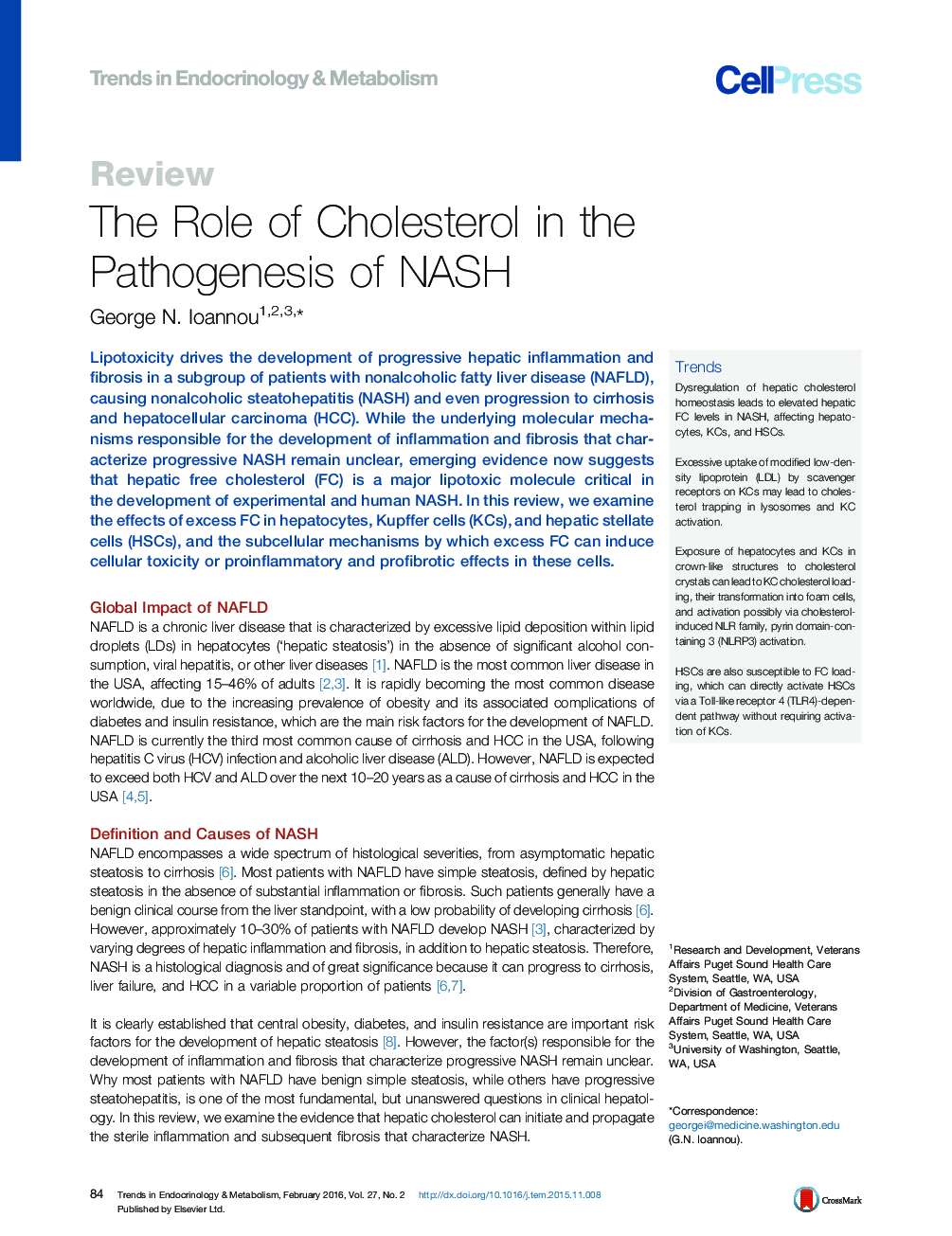| Article ID | Journal | Published Year | Pages | File Type |
|---|---|---|---|---|
| 2810105 | Trends in Endocrinology & Metabolism | 2016 | 12 Pages |
Lipotoxicity drives the development of progressive hepatic inflammation and fibrosis in a subgroup of patients with nonalcoholic fatty liver disease (NAFLD), causing nonalcoholic steatohepatitis (NASH) and even progression to cirrhosis and hepatocellular carcinoma (HCC). While the underlying molecular mechanisms responsible for the development of inflammation and fibrosis that characterize progressive NASH remain unclear, emerging evidence now suggests that hepatic free cholesterol (FC) is a major lipotoxic molecule critical in the development of experimental and human NASH. In this review, we examine the effects of excess FC in hepatocytes, Kupffer cells (KCs), and hepatic stellate cells (HSCs), and the subcellular mechanisms by which excess FC can induce cellular toxicity or proinflammatory and profibrotic effects in these cells.
TrendsDysregulation of hepatic cholesterol homeostasis leads to elevated hepatic FC levels in NASH, affecting hepatocytes, KCs, and HSCs.Excessive uptake of modified low-density lipoprotein (LDL) by scavenger receptors on KCs may lead to cholesterol trapping in lysosomes and KC activation.Exposure of hepatocytes and KCs in crown-like structures to cholesterol crystals can lead to KC cholesterol loading, their transformation into foam cells, and activation possibly via cholesterol-induced NLR family, pyrin domain-containing 3 (NLRP3) activation.HSCs are also susceptible to FC loading, which can directly activate HSCs via a Toll-like receptor 4 (TLR4)-dependent pathway without requiring activation of KCs.
